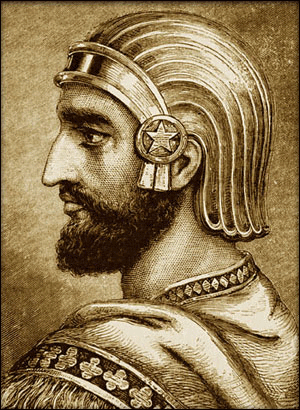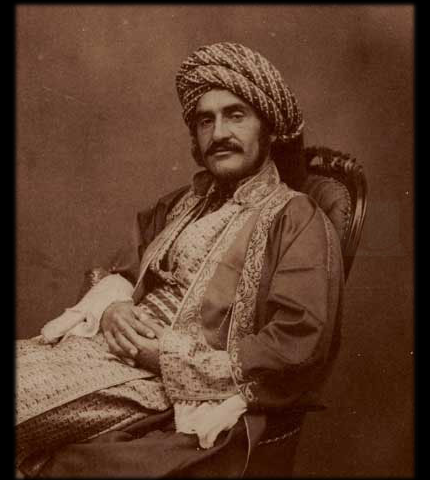Cyrus Cylinder
Cyrus II of Persia (600 BC or 576 BC–530 BC), commonly known as Cyrus the Great, also known as Cyrus the Elder, was the founder of the Achaemenid Empire. The reign of Cyrus the Great lasted between 29 and 31 years. Cyrus built his empire by conquering first the Median Empire, then the Lydian Empire and eventually the Neo-Babylonian Empire. His regal titles in full were The Great King, King of Persia, King of Anshan, King of Media, King of Babylon, King of Sumer and Akkad, King of the four corners of the World. He also pronounced what some consider being one of the first historically important declarations of human rights via the Cyrus Cylinder.
Artistic Portrait of Cyrus the Great
The Cyrus Cylinder is a document issued by Cyrus the Great, consisting of a cylinder of clay inscribed in Akkadian Cuneiform script. The Cyrus Cylinder was discovered in Nineveh in 1879 and is now in the British Museum. It describes the conquest of Babylon by the Persian King Cyrus and the reorganization that he instituted to consolidate his authority.

Cyrus Cylinder
The Cyrus Cylinder confirms the Biblical account of the Jewish people applying to the King of Persia to have these resettlement policies applied to them. The King of Persia then allowed the Jewish people to return to their homeland from captivity in Babylon. They were also assisted in rebuilding their Temple.
The Assyro-British archaeologist Hormuzd Rassam discovered the Cyrus Cylinder in March 1879 during a lengthy programme of excavations in Mesopotamia carried out for the British Museum.

Hormuzd Rassam
The Cyrus Cylinder is located in the British Museum, London.

British Museum, London
.png)